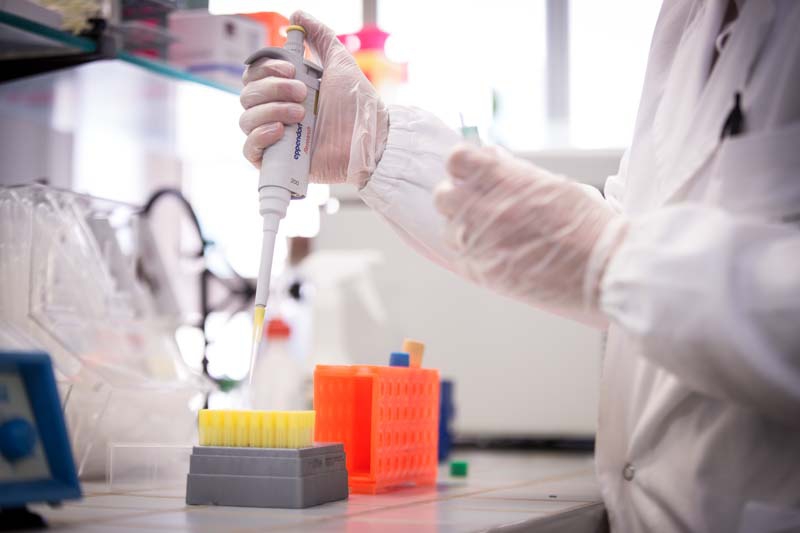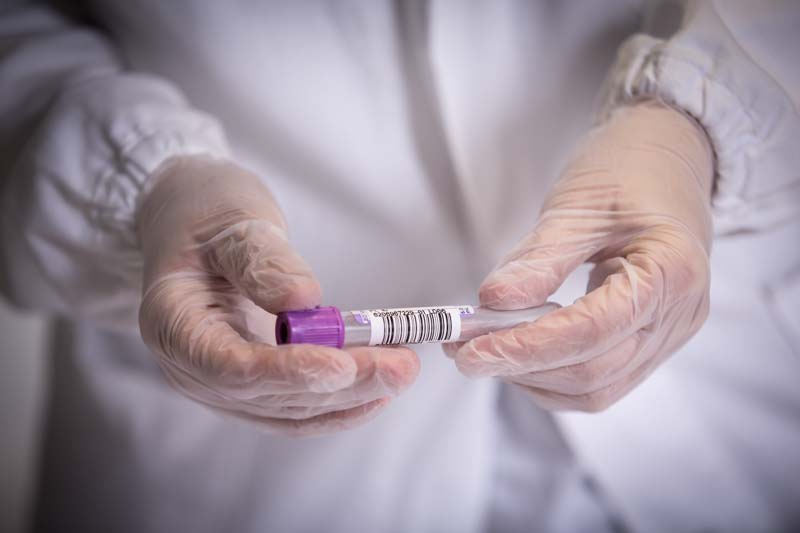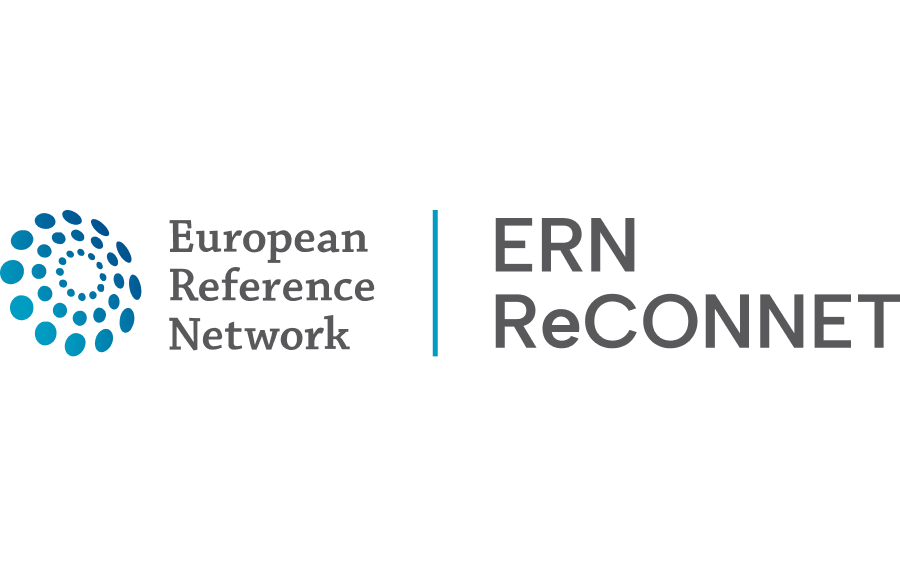ERN ReCONNET
Disease Info
Disease: Ehlers-Danlos Syndrome
Ehlers-Danlos Syndrome (EDS)
The term Ehlers-Danlos syndrome (EDS) include a clinically and genetically heterogeneous group of hereditary connective tissue disorders characterized by remarkable joint hypermobility, abnormal skin texture and tissue fragility.
The advent of next generation sequencing into genetic research and diagnostics expanded the knowledge on the molecular basis of EDS and increased the number of patients with a laboratory-proved diagnosis. In March 2017, an updated International Classification of EDS and related disorders identified 13 variants with mutations in 19 distinct genes. Various molecular pathways are involved in the aetiology of these disorders, and many EDS variants are caused by mutations in genes involved in collagen biogenesis and other molecules of the extracellular matrix.
The classical, vascular and hypermobile EDS are the most common variants.
Future research should focus on the elucidation of the pathogenesis of features impacting quality and quantity of life of the affected individuals, disease progression at different ages, and on the identification of clinically reliable biomarkers and targetable signalling pathways and cellular processes for possible personalized therapies. In addition, the development of evidence-based recommendations for the assessment a management of these disorders is critical for optimizing practitionersí activities and improving patientsí health state.


LIST OF USEFUL REFERENCES
1. The 2017 international classification of the Ehlers-Danlos syndromes
Malfait F, Francomano C, Byers P, Belmont J, Berglund B, Black J, Bloom L, Bowen JM, Brady AF, Burrows NP, Castori M, Cohen H, Colombi M, Demirdas S, De Backer J, De Paepe A, Fournel-Gigleux S, Frank M, Ghali N, Giunta C, Grahame R, Hakim A, Jeunemaitre X, Johnson D, Juul-Kristensen B, Kapferer-Seebacher I, Kazkaz H, Kosho T, Lavallee ME, Levy H, Mendoza-Londono R, Pepin M, Pope FM, Reinstein E, Robert L, Rohrbach M, Sanders L, Sobey GJ, Van Damme T, Vandersteen A, van Mourik C, Voermans N, Wheeldon N, Zschocke J, Tinkle B.
Am J Med Genet C Semin Med Genet. 2017 Mar;175(1):8-26.
2. A framework for the classification of joint hypermobility and related conditions
Castori M, Tinkle B, Levy H, Grahame R, Malfait F, Hakim A.
Am J Med Genet C Semin Med Genet. 2017 Mar;175(1):148-157.
3. Measurement properties of clinical assessment methods for classifying generalized joint hypermobility-A systematic review
Juul-Kristensen B, Schmedling K, Rombaut L, Lund H, Engelbert RH.
Am J Med Genet C Semin Med Genet. 2017 Mar;175(1):116-147.
4. The Ehlers-Danlos syndromes, rare types
Brady AF, Demirdas S, Fournel-Gigleux S, Ghali N, Giunta C, Kapferer-Seebacher I, Kosho T, Mendoza-Londono R, Pope MF, Rohrbach M, Van Damme T, Vandersteen A, van Mourik C, Voermans N, Zschocke J, Malfait F.
Am J Med Genet C Semin Med Genet. 2017;175(1):70-115.
Malfait F, Francomano C, Byers P, Belmont J, Berglund B, Black J, Bloom L, Bowen JM, Brady AF, Burrows NP, Castori M, Cohen H, Colombi M, Demirdas S, De Backer J, De Paepe A, Fournel-Gigleux S, Frank M, Ghali N, Giunta C, Grahame R, Hakim A, Jeunemaitre X, Johnson D, Juul-Kristensen B, Kapferer-Seebacher I, Kazkaz H, Kosho T, Lavallee ME, Levy H, Mendoza-Londono R, Pepin M, Pope FM, Reinstein E, Robert L, Rohrbach M, Sanders L, Sobey GJ, Van Damme T, Vandersteen A, van Mourik C, Voermans N, Wheeldon N, Zschocke J, Tinkle B.
Am J Med Genet C Semin Med Genet. 2017 Mar;175(1):8-26.
Castori M, Tinkle B, Levy H, Grahame R, Malfait F, Hakim A.
Am J Med Genet C Semin Med Genet. 2017 Mar;175(1):148-157.
Juul-Kristensen B, Schmedling K, Rombaut L, Lund H, Engelbert RH.
Am J Med Genet C Semin Med Genet. 2017 Mar;175(1):116-147.
Brady AF, Demirdas S, Fournel-Gigleux S, Ghali N, Giunta C, Kapferer-Seebacher I, Kosho T, Mendoza-Londono R, Pope MF, Rohrbach M, Van Damme T, Vandersteen A, van Mourik C, Voermans N, Zschocke J, Malfait F.
Am J Med Genet C Semin Med Genet. 2017;175(1):70-115.
5. Gastrointestinal involvement in the Ehlers-Danlos syndromes
Fikree A, Chelimsky G, Collins H, Kovacic K, Aziz Q.
Am J Med Genet C Semin Med Genet. 2017 Mar;175(1):181-187.
6. Pregnancy outcome in joint hypermobility syndrome and Ehlers-Danlos syndrome
Sundelin HE, Stephansson O, Johansson K, Ludvigsson JF.
Acta Obstet Gynecol Scand. 2017 Jan;96(1):114-119.
7. Neurological and spinal manifestations of the Ehlers-Danlos syndromes
Henderson FC Sr, Austin C, Benzel E, Bolognese P, Ellenbogen R, Francomano CA, Ireton C, Klinge P, Koby M, Long D, Patel S, Singman EL, Voermans NC.
Am J Med Genet C Semin Med Genet. 2017 Mar;175(1):195-211. DOI: 10.1002/ajmg.c.31549.
8. Psychiatric and psychological aspects in the Ehlers-Danlos syndromes
Bulbena A, Baeza-Velasco C, Bulbena-Cabré A, Pailhez G, Critchley H, Chopra P, Mallorquí-Bagué N, Frank C, Porges S.
Am J Med Genet C Semin Med Genet. 2017 Mar;175(1):237-245.
9. Chronic fatigue in Ehlers-Danlos syndrome-Hypermobile type
Hakim A, De Wandele I, O’Callaghan C, Pocinki A, Rowe P.
Am J Med Genet C Semin Med Genet. 2017 Mar;175(1):175-180.
10. Oral and mandibular manifestations in the Ehlers-Danlos syndromes
Mitakides J, Tinkle BT.
Am J Med Genet C Semin Med Genet. 2017 Mar;175(1):220-225.
11. Spectrum of mucocutaneous manifestations in 277 patients with joint hypermobility syndrome/Ehlers-Danlos syndrome, hypermobility type
Castori M, Dordoni C, Morlino S, Sperduti I, Ritelli M, Valiante M, Chiarelli N, Zanca A, Celletti C, Venturini M, Camerota F, Calzavara-Pinton P, Grammatico P, Colombi M.
Am J Med Genet C Semin Med Genet. 2015 Mar;169C(1):43-53.
Fikree A, Chelimsky G, Collins H, Kovacic K, Aziz Q.
Am J Med Genet C Semin Med Genet. 2017 Mar;175(1):181-187.
Sundelin HE, Stephansson O, Johansson K, Ludvigsson JF.
Acta Obstet Gynecol Scand. 2017 Jan;96(1):114-119.
Henderson FC Sr, Austin C, Benzel E, Bolognese P, Ellenbogen R, Francomano CA, Ireton C, Klinge P, Koby M, Long D, Patel S, Singman EL, Voermans NC.
Am J Med Genet C Semin Med Genet. 2017 Mar;175(1):195-211. DOI: 10.1002/ajmg.c.31549.
Bulbena A, Baeza-Velasco C, Bulbena-Cabré A, Pailhez G, Critchley H, Chopra P, Mallorquí-Bagué N, Frank C, Porges S.
Am J Med Genet C Semin Med Genet. 2017 Mar;175(1):237-245.
Hakim A, De Wandele I, O’Callaghan C, Pocinki A, Rowe P.
Am J Med Genet C Semin Med Genet. 2017 Mar;175(1):175-180.
Mitakides J, Tinkle BT.
Am J Med Genet C Semin Med Genet. 2017 Mar;175(1):220-225.
Castori M, Dordoni C, Morlino S, Sperduti I, Ritelli M, Valiante M, Chiarelli N, Zanca A, Celletti C, Venturini M, Camerota F, Calzavara-Pinton P, Grammatico P, Colombi M.
Am J Med Genet C Semin Med Genet. 2015 Mar;169C(1):43-53.
12. Ehlers-Danlos syndromes, hypermobility spectrum disorders, and associated co-morbidities: Reports from EDS ECHO
Hakim AJ, Tinkle BT, Francomano CA.
Am J Med Genet C Semin Med Genet. 2021 Dec;187(4):413-415.
13. Diagnosis, natural history, and management in vascular Ehlers-Danlos syndrome
Byers PH, Belmont J, Black J, De Backer J, Frank M, Jeunemaitre X, Johnson D, Pepin M, Robert L, Sanders L, Wheeldon N.
Am J Med Genet C Semin Med Genet. 2017 Mar;175(1):40-47.
14. The evidence-based rationale for physical therapy treatment of children, adolescents, and adults diagnosed with joint hypermobility syndrome/hypermobile Ehlers Danlos syndrome
Engelbert RH, Juul-Kristensen B, Pacey V, de Wandele I, Smeenk S, Woinarosky N, Sabo S, Scheper MC, Russek L, Simmonds JV.
Am J Med Genet C Semin Med Genet. 2017 Mar;175(1):158-167.
15. Pain management in the Ehlers-Danlos syndromes
Chopra P, Tinkle B, Hamonet C, Brock I, Gompel A, Bulbena A, Francomano C.
Am J Med Genet C Semin Med Genet. 2017 Mar;175(1):212-219.
16. Orthopaedic management of the Ehlers-Danlos syndromes
Ericson WB Jr, Wolman R.
Am J Med Genet C Semin Med Genet. 2017 Mar;175(1):188-194.
Hakim AJ, Tinkle BT, Francomano CA.
Am J Med Genet C Semin Med Genet. 2021 Dec;187(4):413-415.
Byers PH, Belmont J, Black J, De Backer J, Frank M, Jeunemaitre X, Johnson D, Pepin M, Robert L, Sanders L, Wheeldon N.
Am J Med Genet C Semin Med Genet. 2017 Mar;175(1):40-47.
Engelbert RH, Juul-Kristensen B, Pacey V, de Wandele I, Smeenk S, Woinarosky N, Sabo S, Scheper MC, Russek L, Simmonds JV.
Am J Med Genet C Semin Med Genet. 2017 Mar;175(1):158-167.
Chopra P, Tinkle B, Hamonet C, Brock I, Gompel A, Bulbena A, Francomano C.
Am J Med Genet C Semin Med Genet. 2017 Mar;175(1):212-219.
Ericson WB Jr, Wolman R.
Am J Med Genet C Semin Med Genet. 2017 Mar;175(1):188-194.



